The last renovation of the Buda Castle Tunnel took place in 1973. For this, the passage was completely closed, because almost every part of it was changed during the renovation. The renovation of the Tunnel was part of a larger investment, as the Chain Bridge was also renovated at the same time.
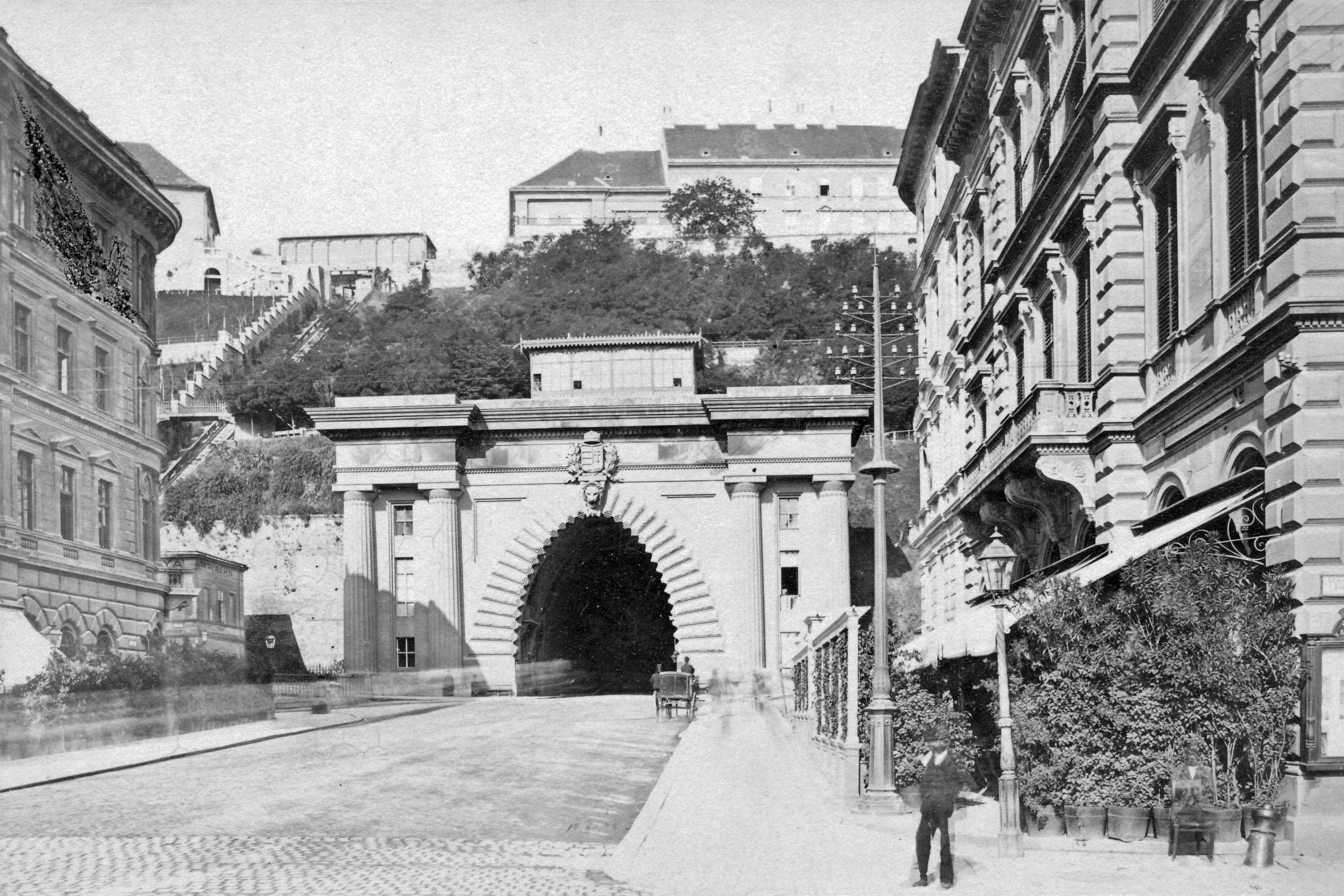
The Tunnel at the end of the 19th century (Photo: Fortepan/No: 23822)
Originally, Clark Ádám Square was also to be renovated, and a total of 85 million HUF was allocated for the entire work, of which 22 million HUF was intended to be used for the renovation of the Tunnel, but the capital did not have that much money. During the preparation, there was a big discussion about the investment in the Executive Committee of the Budapest Socialist Council in the summer of 1972. It was certain that the bridge would have to be renovated, but before the Executive Committee Andor Giltner, the Director General of the Public Works and Civil Engineering General Directorate said that the Tunnel could have waited a few more years, but that these works were also connected due to the upcoming centenary in 1973.
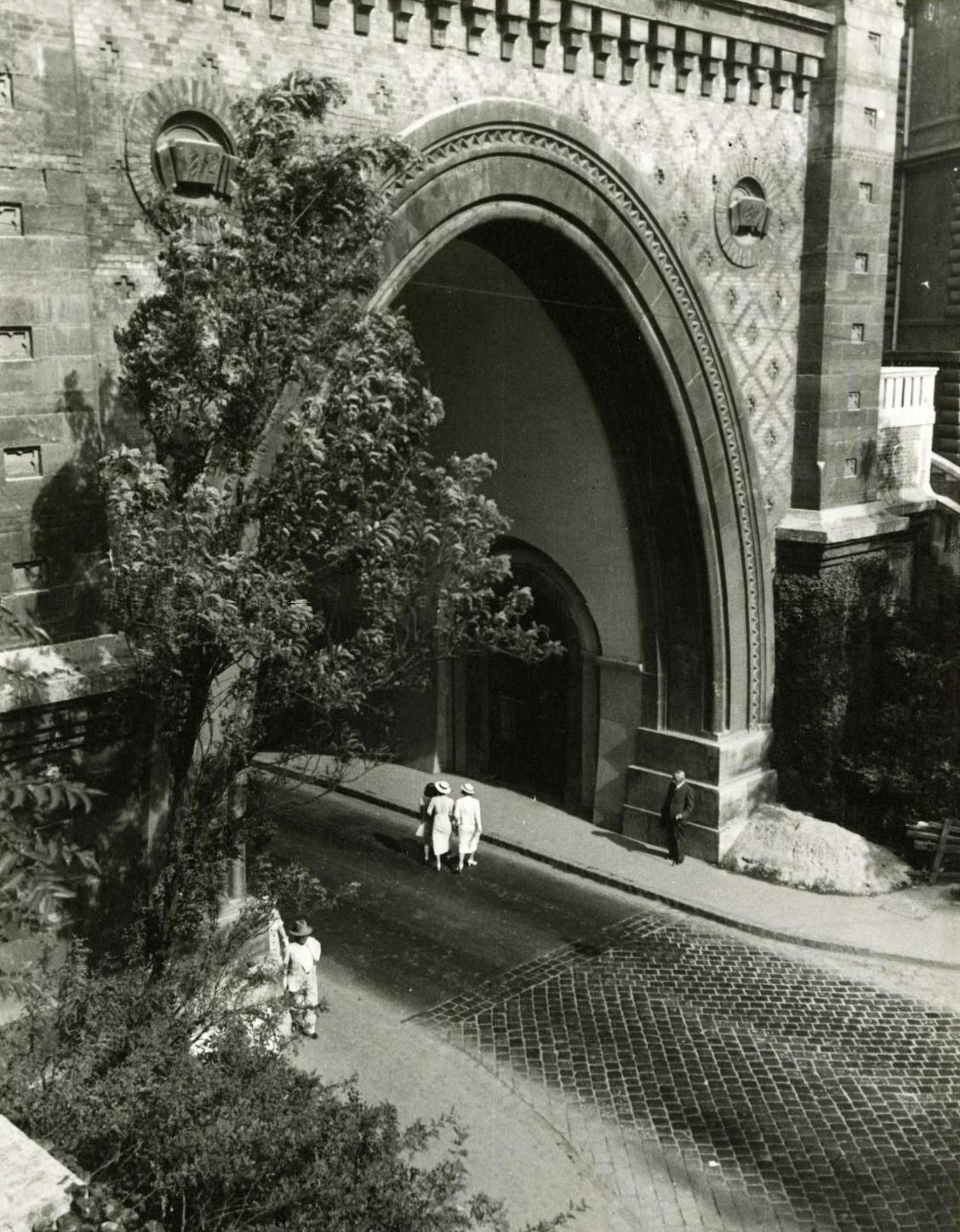
The original western exit of the Tunnel, which was destroyed in World War II (Photo: Fortepan/No.: 1939)
However, the members of the Executive Committee were not thrilled by the fact that soon after the construction of the metro, which also involved significant surface traffic restrictions, an important traffic crossing, or even three at the same time, will be closed again, the bridge, Clark Ádám Square and the Tunnel. The main problem with the Tunnel was that it was not possible to work there while maintaining car traffic, or, as was said in the discussion, only with a gas mask, which of course would have been impossible. Another problem was that the time for the renovation of the Tunnel was calculated to be longer than that of the bridge.
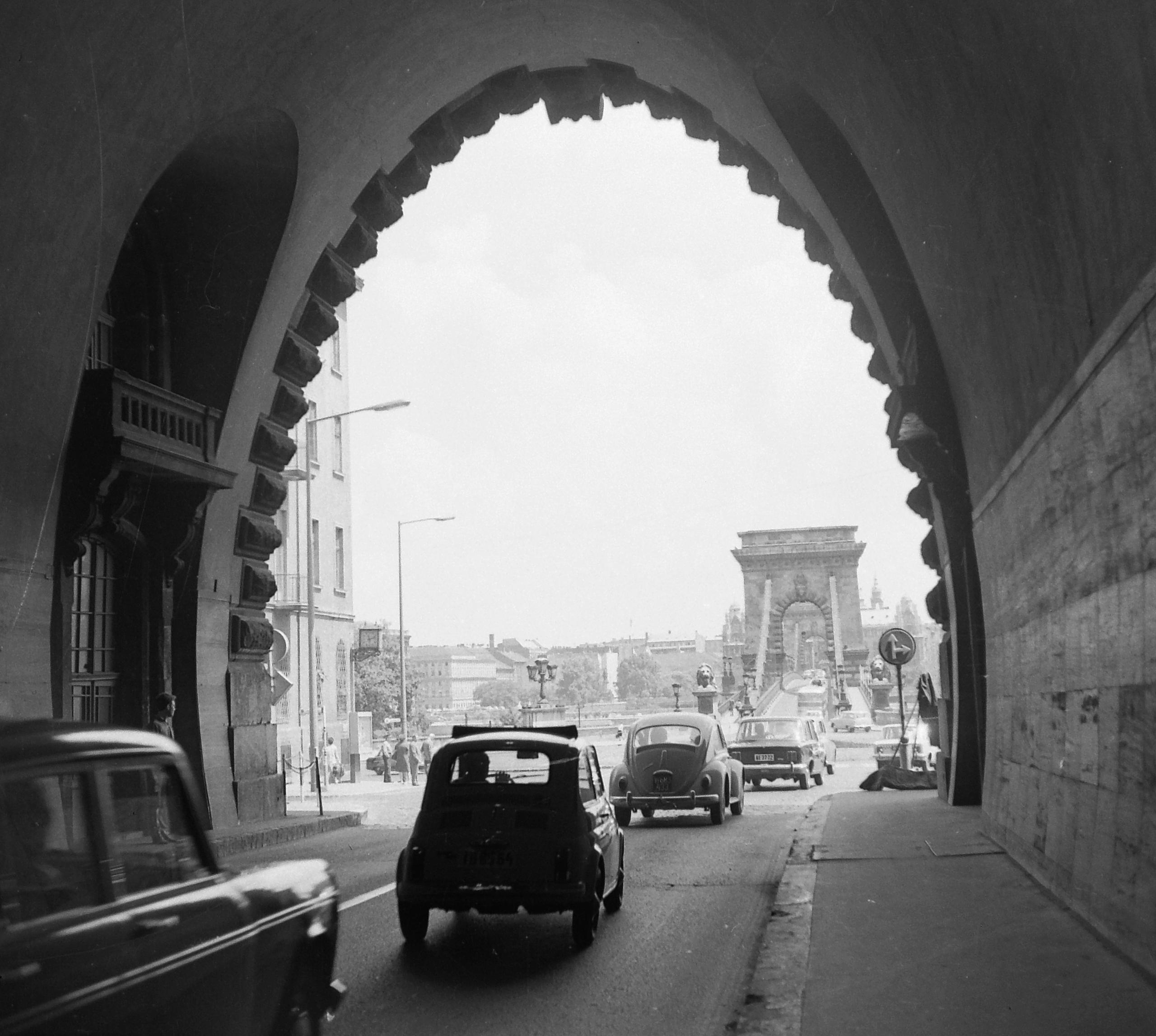
The interior of the Tunnel in 1970 (Photo: Fortepan/No.: 4540)
Of course, it caused a debate about what should be done. The council members were puzzled that, for example, the ventilation had already been improved before, so why did it have to be modified again in 1972? In fact, the fans were switched on manually until then, and in 1972, a more modern mechanism with automatic control was installed.
Many people criticised the need for tiles in the Tunnel, could not there be a simpler solution? Zoltán Szépvölgyi, the president of the Budapest Socialist Council, summed up the discussion at the meeting of the Executive Committee on 30 August 1972, according to the minutes:
"There was a lot of discussion about the tiles. Not because it is not technologically good or beautiful, but because it costs a lot of money and can be considered a bit of a luxury in our financial situation. It came up that the problem of the Tunnel should be solved with modest, simple solutions."
But what had to be renovated in the Tunnel? The passage was actually in pretty bad shape, as it was soaked. This problem has been a constant since its opening, there were many attempts to drain the water, side passages were built, a drainage system was made, but the water still entered the Tunnel and began to break the lining of the masonry. The Mining Planning Institute examined the Tunnel in detail between 1967 and 1970, they were curious to see how much the water and previous drainage works had weakened the structure. The ventilation also had to be improved, and due to the increasing traffic, a stronger extraction system was definitely needed.
Of course, even then, there were large-scale plans to expand the Tunnel or to build a new 2×3 lane crossing parallel to it, but as we saw at the meeting of the Executive Committee of the Budapest Socialist Council, the council members wanted to save even on the planned renovation of the old tunnel. At that time, there was no money for the construction of a new tunnel under the Castle, and in the end, even the reconstruction of Clark Ádám Square was left out of the works, it was postponed because at that time it was assumed that an overpass would be built here as well.
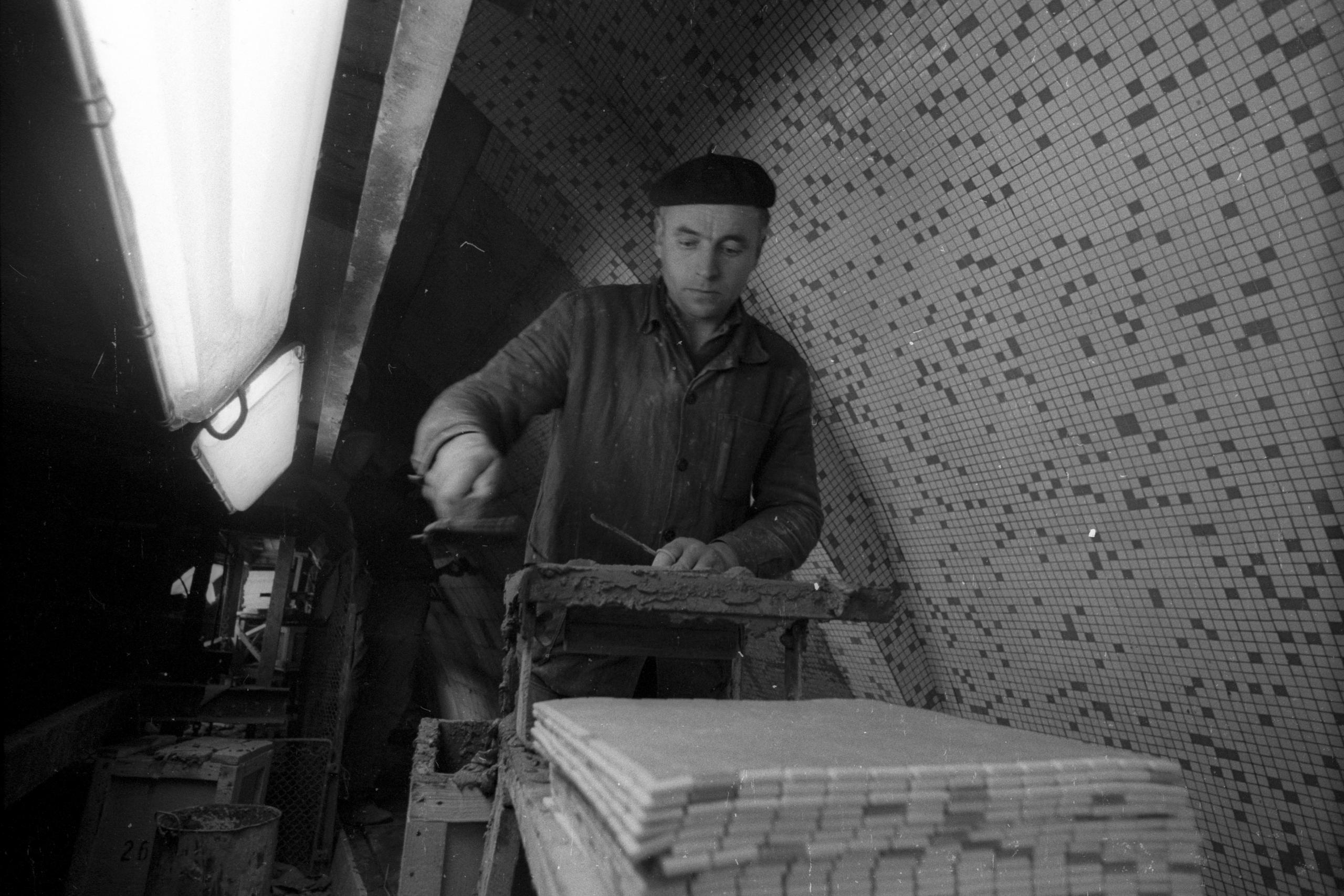
Laying the much-discussed tiles. The 2×2 centimetre tiles were laid not individually, but in larger sheets (Photo: Fortepan/No.: 138956)
The actual work on the Tunnel began on 8 January 1973, when it was closed to traffic, which not only adversely affected motorists, but also the route of several bus routes was changed due to the work. They bypassed Castle Hill and went through the Erzsébet Bridge, and the route of bus 4 was split into lines 4/A and 4/B, despite the fact that work on the Chain Bridge had not yet begun at that time.

Works in the Tunnel (Photo: Fortepan/No.: 138954)
Of course, the renovation started earlier, since by then a new service passage parallel to the old passage had been completed (there are more that run next to the Tunnel, they serve partly for ventilation and partly for drainage), the passage completed by 1973 was meant to ensure the transport of fresh air. Hétfői Hírek summarised the work in its issue of 2 January 1973:
"Next to the Castle Tunnel, a two-metre-diameter ventilation tunnel of the same length, running parallel to it, has been completed; from this, the high-performance fans will continuously blow fresh air into the large tunnel. The modernisation of the Tunnel will also begin this year. Its side walls are injected with a special waterproofing concrete layer using a special process and then covered with white and light blue glass mosaic tiles. The road will also be renovated, and a barrier will be placed next to the sidewalk. They will also completely transform the lighting in the Tunnel."
In the Tunnel, practically the entire wall covering was removed and a new one was built, in which a network of narrow drainage pipes was installed, thus channelling out the water seeping into the passage. Austrian companies were also involved in the work, especially during the construction of the waterproof cover, which was justified in the 18 May 1973 issue of Élet és Tudomány:
"Insulation is a delicate job, and there was no company in our country that would undertake it with a warranty. The Austrian company Iso-Bau was chosen because it offered a five-year warranty for its work. […] The Austrian company added an interesting innovation to the previous solution. To prevent the water from washing away the cement from the insulation layer that has just been applied, and so that its pressure does not weigh on the solidified cover later, channels were made in the vulnerable surface parts. Along the lines of the leaks, 7 cm wide plastic strips reinforced with zigzag wire inserts were glued to the cleaned brick vault […]. The little channels formed in this way (behind the cover) lead the water down into the plastic water collection pipes running under the sidewalks, and it flows out of the tunnel through them."
The transformation of the lighting was also significant, instead of the previous barely flickering lights, modern sodium vapour lamps were installed, which gave five times the previous brightness in the middle of the Tunnel.
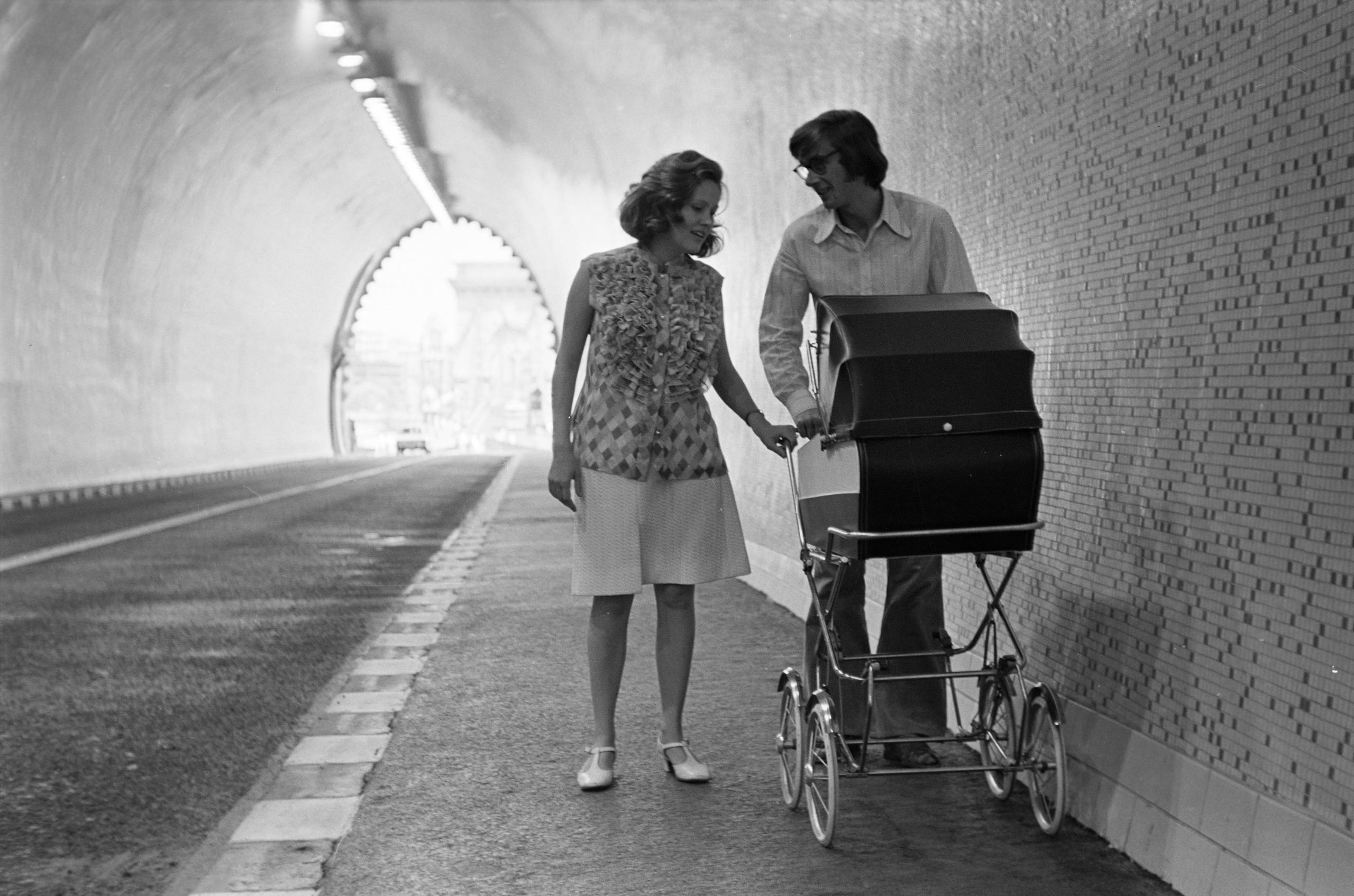
Idyllic picture after the renovation, from 1974, of course, the air in the Tunnel was not good enough to comfortably walk there (Photo: Fortepan/No.: 219504)
The entire work was completed on 15 June 1973, and that is when the general public got to know the previously mentioned tile covering, which consisted of 88 per cent white and 12 per cent blue 2×2 cm tiles. The public discourse in Pest at the time named the Tunnel the largest bathroom in the country.
During the works, another change was made to the image of the Tunnel, the coat of arms above the eastern entrance was replaced, the former Rákosi coat of arms was replaced by the then valid Kádár coat of arms.
Cover photo: The closed Tunnel (Photo: Fortepan/No.: 88016)

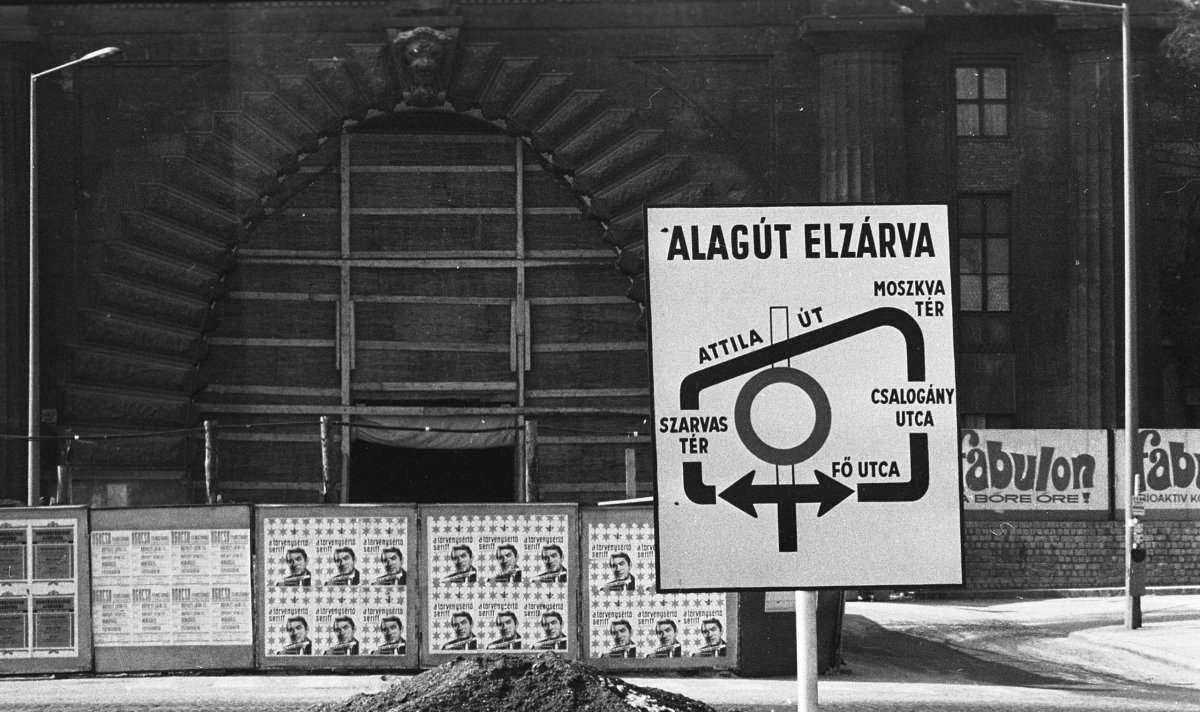


































Hozzászólások
Log in or register to comment!
Login Registration